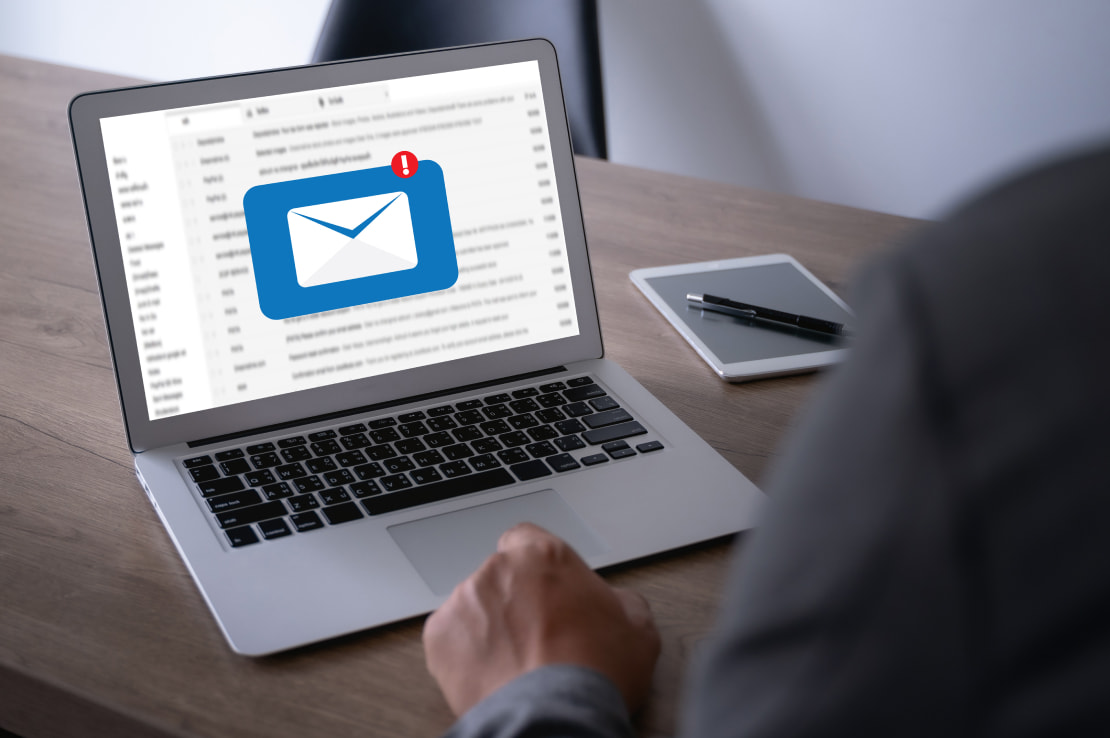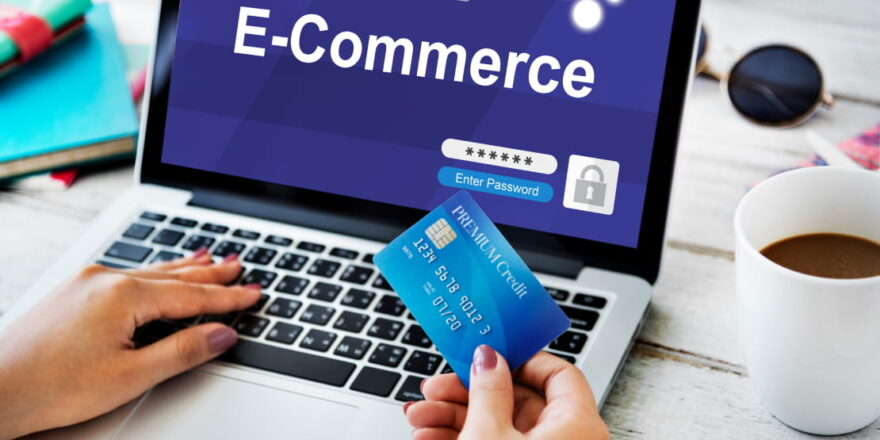
Bill Gates popularized the catchphrase “content is king” in a 1996 essay to articulate the importance of content on the Internet. The first line was, “Content is where I expect much of the real money will be made on the Internet, just as it was in broadcasting.”
He was right, of course. The content marketing market is booming. Businesses spent $42.15 billion on content in 2019, and projections show that spending will increase by $417.85 billion from 2021 to 2025.
However, we would argue that if the content is king, then personalization is queen, particularly when it comes to e-commerce. A 2018 report states that 80% of consumers are more likely to buy when brands provide a personalized experience, and another survey indicates that 70% of millennials don’t like getting irrelevant e-mails.
Enter targeted e-mail marketing.
What Is Targeted E-mail Marketing?
Targeted e-mail is a customized message for specific segments of an e-mailing list. A key element of targeted e-mail marketing is creating content relevant to and valuable for a particular segment.
Recipient segmentation can be based on several factors, such as gender, geography, age, preferences, previous buying behavior, and so on.
The goal of targeted e-mail advertising is to reach out to people on your list that are most likely to find your content relevant and exciting, thus increasing brand engagement. And each time you send an email, they are more likely to open it and visit your online store.
E-mail marketing has long been considered one of the most effective strategies to increase brand awareness and boost sales for e-commerce businesses. Research shows that the return on investment (ROI) is $36 for every $1 spent for e-mail marketing.
You can expect even better engagement rates and sales conversions for personalized content. One report claims that targeted e-mails outperform generic e-mails in open rates by 42%. Yet another report suggests that fewer but more focused e-mails using customer data would be the most effective advertising spend.
Does Targeted E-mail Work?

Anecdotally, it’s easy to say that targeted e-mails work without even delving into studies and reports. Think about it: you have likely opened e-mails that seemed to give you what you need.
For example, you browsed an online retail site and considered several items but didn’t buy anything. The next day, you found an e-mail in your inbox that showed you several variations of the item you looked at and offered a discount if you clicked on a specific link to purchase. This is a simple conversion that the retail site can generate with a targeted e-mail.
This doesn’t always happen, of course, but targeted e-mails can significantly increase your e-mail open rates (how many recipients opened your e-mail). More significantly, it can improve your click-to-open rates (CTOR) or your overall engagement.
Smart Insights reported that financial industry e-mails had an open rate of 24.94% but a CTOR of 12.92% in 2020. That means only half of the people who opened the e-mail read the contents and interacted with the links and calls-to-action (CTA). In terms of content, the CTOR is a more accurate indicator of an impact than the open rate.
Let’s talk about the many benefits of targeted e-mail marketing:
Improves Engagement
The purpose of an e-mail is to engage with the recipient, and a targeted e-mail makes it likely that they will interact with the content. Aside from opening and reading your e-mail, they may register for a newsletter, go to your website, make a purchase, forward it to others, or reply directly to you.
Increases Revenue
Targeted e-mail advertising has been shown to generate up to 36% of revenue for B2B companies, and it stands to reason that it would work just as well with B2C online businesses. If you want to promote a product or increase sales overall, you should include targeted emails in your overall marketing strategy.
Drives Brand Recognition
Anyone who receives a targeted e-mail from your brand will remember it because you provided value. Whether it is a discount for an appropriate item or service or access to gated content with helpful information, recipients are more likely to open your e-mails and follow your CTA.
Fosters Relationships
People like it when businesses address them by name and remember what they bought. This level of personalization makes them feel valued and listened to.
When you send them customized content that treats them as individuals, it creates a bond between you and the customer. And if you have a strong relationship with your customers, they are more likely to develop trust and loyalty to your brand.
Increase Retention
Customer retention is a direct result of developing relationships with your customers, and it is much more cost-effective to keep them coming back than to get new ones.
Unfortunately, most companies focus more on customer acquisition than retention. Existing customers of your e-commerce store are 50% more likely to buy a new product from you than a new customer, so it makes sense to make every effort to keep existing customers happy.
What Are The Common Types Of Targeted E-mail Campaigns?

Targeted e-mail marketing has many flavors, and you can make quite a few variations depending on your data.
Here are five types that marketers commonly use:
1. Gender Targeted E-mail Campaign
Personalizing e-mails according to gender effectively boosts sales for some industries, such as clothing and consumer products.
Many e-retailers can learn a few tricks from Coyuchi, which used colors to differentiate between e-mails to their male and female subscribers. They used gray and blue products for men and pastels for women. It was successful in that it led to increased engagement and conversions.
2. Geo-Targeted E-mail Advertising
Segmenting by location is another easy way to personalize e-mails. E-commerce stores are at an advantage because of access to customers’ shipping addresses. You can also add IP geolocation to your site so you can capture your visitors’ locations even if they don’t buy anything from you.
Geo-targeted e-mail advertising is helpful when you want to boost your local SEO performance. When more people visit your e-commerce store because they engaged with a targeted email, your site’s ranking will improve in localized search results.
The beauty of e-commerce is you can improve the local SEO ranking for all of your locations using targeted e-mail!
3. Preference Targeted E-mail
Targeting audience segments according to their interests and hobbies is an excellent way to pull them in. You can capture this information by including an e-mail preference center on your website.

You can focus on sending fewer e-mails of more value to your subscribers when you have this information. If you do it correctly, they might start checking their inboxes for your next messages.
4. Behavior Targeted E-mail Campaign
Targeted e-mail marketing based on behavior can be dicey if you don’t properly analyze your data. When you know how subscribers interact with your website and previous e-mails, you can tailor content based on that behavior.
Several scenarios can come into play:
- The subscriber spends considerable time on one section of your site. Determine the content that caught their attention and double down on it in your next email.
- The recipient didn’t even open your email. Send a follow-up email with a compelling subject line, such as an exclusive peek at a new product or an interrogatory asking if they would like to change their email preferences.
- A customer bought something. Connect with them with a thank-you email with an expected date of delivery. Include suggestions for complementary purchases or attach a product tutorial for best practices.
5. Lifecycle Targeted E-mail Advertising
Targeted e-mail advertising can help bring leads through the sales funnel by carefully guiding them through the journey:
- Site user joins the subscriber list (top of the funnel – awareness). Send an e-mail to welcome them to the club and provide links to the most helpful articles on your site. Be sure to give them a link to the e-mail preference center.
- Subscriber browses the site but doesn’t buy anything (upper middle of the funnel – interest). Give them a code for a one-time discount or free shipping on their first purchase.
- User adds a product to the cart but doesn’t complete the purchase (lower middle of the funnel – desire). Follow up the potential sale by e-mailing them that they “forgot” to complete the checkout. You can throw in a freebie or offer a discount to motivate them to seal the deal.
- Subscriber makes the first purchase (bottom of the funnel – purchase). Welcome your new customer with a thank-you note and some cross-selling.
Once you complete the sales funnel, you should keep the cycle going. Continue to send targeted e-mails to turn first-time buyers into repeat buyers, then loyal, long-term customers.
Pay special attention to loyal customers because you want to keep them coming back. Send them e-mails exclusive to existing buyers and create a loyalty program to offer them special perks.
How Do You Create a Targeted E-mail Campaign?

Now that you know the what and why of targeted e-mail marketing, you should know how to do it. Follow these steps to create highly effective targeted e-mails based on customer data.
Start A Subscription Drive On Your Site and Social Media
Targeted e-mail marketing aims to create personalized content relevant to your subscribers.
Make a concerted effort to collect e-mail addresses for your list by using lead magnets such as newsletters, gated content, templates, videos, downloads, exclusive offers, free trials, and discounts. Some list-building tools might also help.
Divide Your Subscriber List Into Smaller Segments
The people in your subscriber database likely have many things in common, especially in a niche market. But you can always find a way to separate them into smaller groups so you can curate content that is particularly relevant to them.
You can base these segments on age, gender, location, profession, hobbies, buying behavior, and other demographics relevant to your business.
You can also ask your subscribers directly. For example, if you need to separate those who like mint chocolate ice cream from those that don’t, send them a survey form about it.
Create Buyer Personas
Next, create buyer personas for each segment of your target audience. Each persona must have a name and brief description to help you create your targeted e-mail campaigns to get them to sign up. Use this template to get started.
Get Busy With Content Creation
Use as much data available for each market segment to create relevant content. There are many resources to help you strike just the right note with your subscribers.
For example, Canva has many aesthetically appealing email templates to capture your recipients’ attention. Bonus: it integrates easily with Mailchimp.
Test, Test, Test
Run split testing before sending your emails to your intended recipients. Do an A/B test for content, subject lines, timing, and CTAs.
Set out clear key performance indicators (KPIs) to ensure that you meet each campaign’s goals.
How Do You Write a Targeted E-mail?

Creating the actual content for targeted e-mail is the most challenging task for this marketing strategy.
It’s best to create content from the point of view of your buyer persona. Think about what you would say to your customer if they were sitting in front of you. Answer these questions:
- What are their pain points?
- What type of content would be most valuable to them?
- What can you give them that will motivate them to act?
Keep these points in mind while you think about this hypothetical scenario:
Your buyer persona is Sally, a 30-year-old stay-at-home mom with three small children. It’s just after Christmas, and she’s exhausted. The last thing she wants is to think about the New Year party just around the corner.
She checks her e-mail on her mobile phone and sees an e-mail from your beauty product business with the subject line: Are you exhausted? You deserve a little aromatherapy, on us!
Do you think she’d open that e-mail? Would you open it if you were Sally?
Do you want more inspiration? Here are some examples of targeted e-mails that got lots of love from their recipients.
Summary
You can think of targeted e-mail marketing as a return to the good old days when writing letters was a labor of love. Each one took a lot of thought and effort, and those who got them appreciated that. When you take time to personalize your emails, you’re telling your e-commerce customers that even though you’ve never met them physically, they are important and deserving of that effort. The returns will be worth it.




